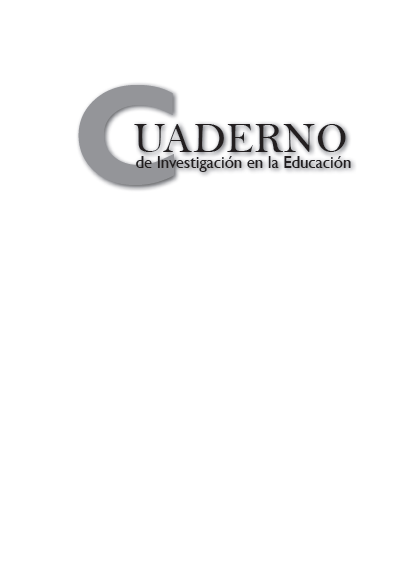Abstract
There prevails in society a general tendency towards the inclusion of pseudoscientific beliefs and practices. This research responds to the need of examining how the proliferation of pseudoscience affects scientific education. A literature review was conducted to analyze the implications of the problem of demarcation between science and pseudoscience for education. From the results, the researcher concludes that this problem is influenced by an educational process focused on a distorted view of science, which, in turns, is the product of not integrating the philosophical, historical and social aspects to it.
How to cite:
Jiménez-Tolentino, D. (2012). Ciencia vs. Pseudociencia: Implicaciones educativas. Cuaderno de Investigación en la Educación, 27, 199-2011. Retrieved from https://revistas.upr.edu/index.php/educacion/article/view/13568
References
Aaseng, N. (1994). Science versus pseudoscience. New York: Franklin Watts.
Agin, D. (2006). Junk Science. USA: Thomas Dunne Books.
Alonso, C. J. (1999). La agonía del cientificismo: Una aproximación a la filosofía de la ciencia. España: Eunsa.
Altschuler, D., Medín, J. & Núñez, E. (2004). Ciencia, pseudociencia y educación. San Juan, PR: Ediciones Callejón.
Barner, B. (1972). Estudios sobre sociología de la ciencia. Madrid: Alianza Editorial.
Bauer, H. (1994). Scientific literacy and the myth of the scientific method. Illinois: Board of Trustees of the University of Illinois.
Bayh-Dole25, Inc. (2006). The Bayh-Dole Act at 25. Recuperado de http://www.baydole25.org
Bueno, G. (1995). ¿Qué es la ciencia? Recuperado de http://www.filosofia.org/aut/gbm/1995 qc.htm
Bunge, M. (1985). Seudociencia e ideología. Madrid: Editorial Alianza.
Bunge, M. (2005). La ciencia, su método y su filosofía. Argentina: Siglo Veinte.
Chalmers, A. (2001). ¿Qué es esa cosa llamada ciencia? México: Editores Siglo XXI.
Covarrubias, F. (2007). El carácter relativo de la objetividad científica. Cinta de Moebio, 28, 39-66.
Dacey, A. (2004). Science and the public. Is science making us more ignorant? The Skeptical Inquirer, 28, 35-39.
Devilly,G. & Lohr, J. (2008). Science and pseudoscience in victims services. International Review of Victimology, 15,105-122.
Diéguez, L. (2005). ¿Qué es la ciencia? En L. Diéguez, Filosofía de la ciencia (Cap. 4). Universidad de Málaga: Biblioteca Nueva.
Espinoza, J. (2005). La crítica de la ciencia moderna en la obra de P. Feyerabend y M. Berman. Revista Filosofía Universidad Costa Rica, 43, 109/100, 81-85.
Fernández, R. (1995). Los muchos rostros de la ciencia. España: Ediciones Nobel.
Freire, P. (2006). Pedagogía de la autonomía. España: Siglo XXI Editores.
García, J. (2008, junio). Aproximación epistemológica al concepto de ciencia: Una perspectiva básica a partir de Kuhn, Popper, Lakatos y Feyerabend. Andamios, 4(8), 185-212.
Gat-Tilman, G. (2007). Science, pseudoscience and moral values. Israel: Mazo Publisher.
González, A. (2002). Falsas energías, pseudociencias y medios de comunicación masiva. Revista Cubana de Filosofía, 19, 68.González, A. (2008). Ciencia, pseudociencia y bioenergía. Revista Cubana de Física, 25, 17- 21.
Kallery, M. (2001). Early-years educators attitudes to science and pseudoscience: The case of astronomy and astrology. European Journal of Teachers Education, 24, 329-342.
Kruglyakov, E. (2002). Why is pseudoscience dangerous? Skeptical Inquirer, 26, 33-36.
Kruglyakov, E. (2004). What threat does pseudoscience pose to society? Social Sciences, 74-88.
Liu, X. (2009). Beyond science literacy: Science and the public. International Journal of Environmental & Science Education, 4, 301-311.
Medín J. & Núñez E. (2000). Pseudociencia y cultura de masas. Parte I: Naturaleza y relevancia de la pseudociencia. Milenio, 4, 9-31.
Moore, D. (2005). Three in four Americans believe in paranormal. Recuperado de http://www.gallup.com/poll/16915
Motterlini, M. (1999). For and against method. Chicago & London: University of Chicago Press.
National Science Board. (2008). Science and engineering indicators. Arlington, VA: National Science Foundation.
Olivé, L. (2007). La ciencia y la tecnología en la sociedad del conocimiento. México: Fondo de Cultura Económica.
Peña, A., Paco, O. & Peralta, C. (2002). Epistemological beliefs and knowledge among physicians: A questionnaire survey. Med Educ Online. Recuperado de http://www.med-ed-online.org
Popper, K. (1994). The myth of the framework. London & New York: Routledge.
Schermer, M. (2002). Why people believe weird things. New York: AW. Freeman Owl Book.
UNESCO (2005). ¿Cómo promover el interés por la cultura científica? Chile: Autor.
Vázquez, M. (2008). Pseudociencias y medios de comunicación: ¿un matrimonio feliz? Revista Cubana de Física, 55, 45-48.
Williams, W. (2000). Encyclopedia of Pseudoscience. USA: Facts on File.
Winfield, N. (2008, 26 de diciembre). El Vaticano limpia la reputación de Galileo. El Nuevo Día, pp. 62-63.
The contents published in the Puerto Rico Journal of Education is freely distributed under open access practices, in accordance with the Creative Commons license, Attribution-NonCommercial 4.0 International (CC BY-NC 4.0). Through these principles, the journal and its authors allow readers to access, reproduce and share articles in full text. Users should give credit to authors in a reasonable way without suggesting they have their support. Under no circumstances, readers may make use of the contents for commercial purposes. The authors retain copyright on their works.

